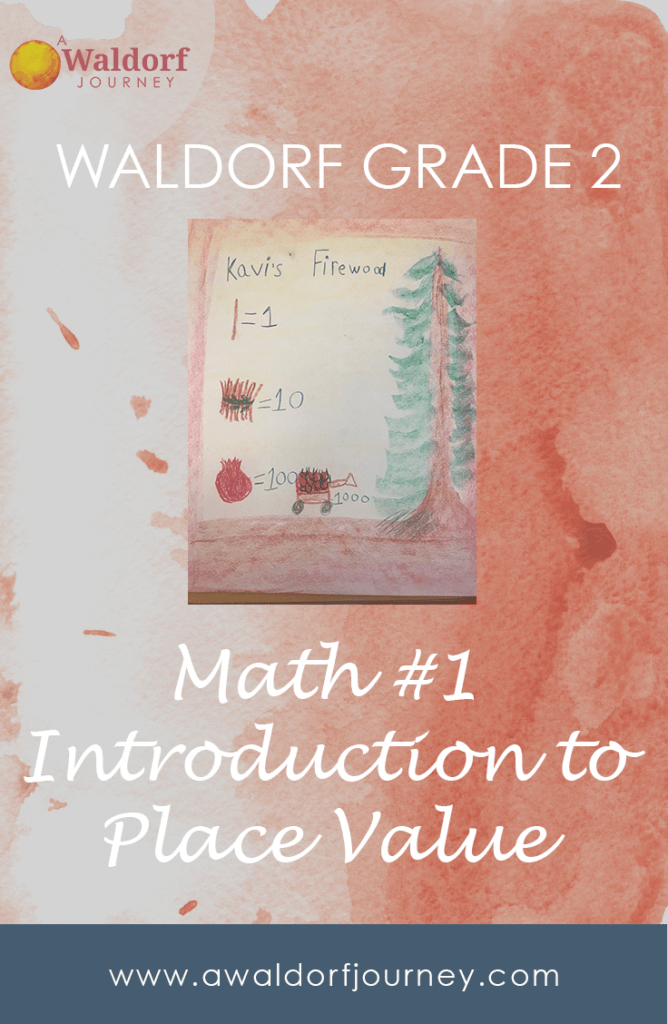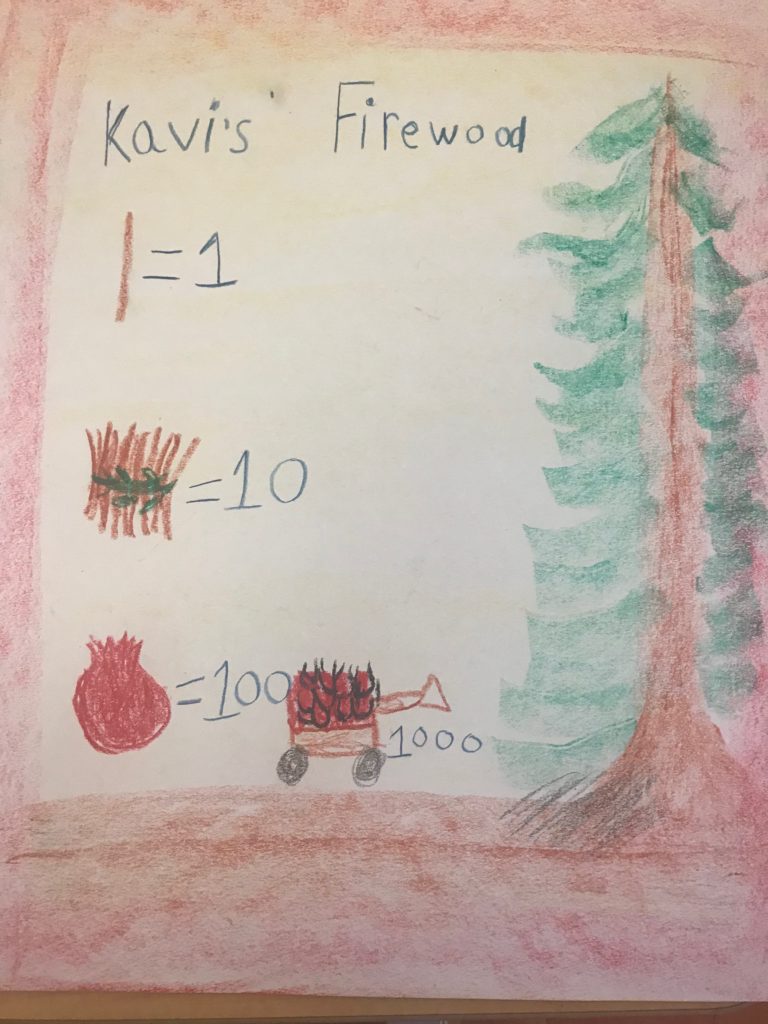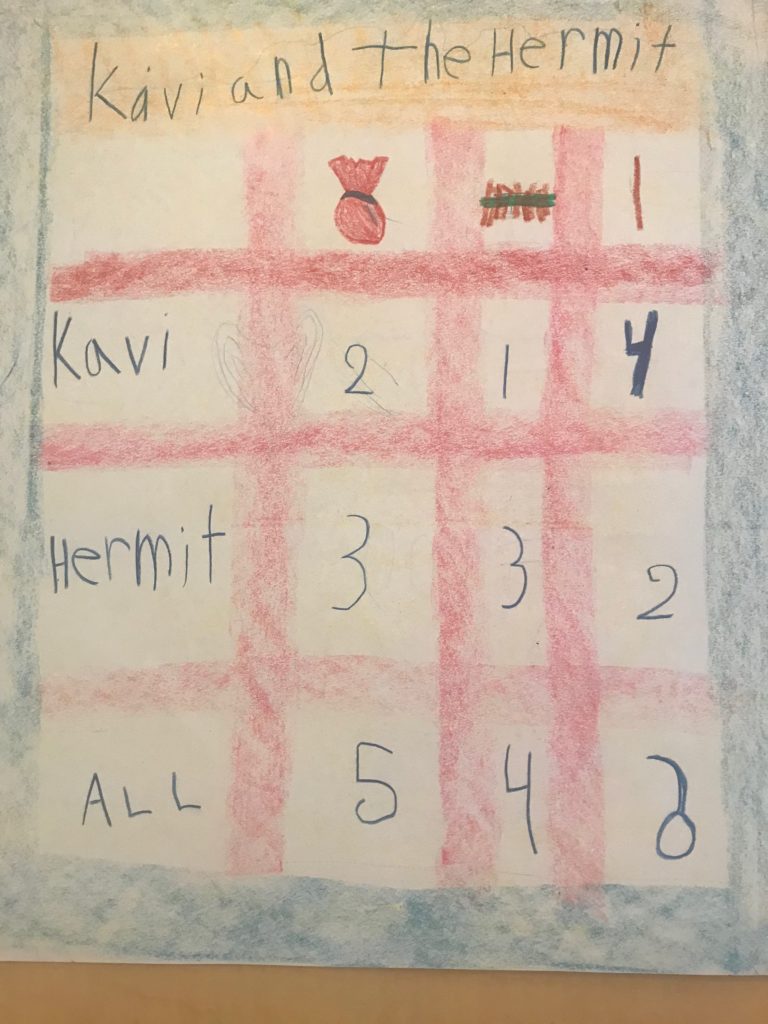This year I’ve made a commitment to myself (and my readers) to make every effort to share my curriculum materials as soon as possible.
Waldorf Math
You see, my curriculum guides come straight from my lesson planner. When I sit down to put them all together in a final polished document for all of you, I flip through my lesson books and reflect on how my students absorbed the material and what I learned in teaching it.
I’ve found that if I sit down and go through this process right away, everything is fresh in my mind and the insights and inspirations flow easily.
Well, that ease certainly happened when I put together this Waldorf Grade Two Math curriculum guide.
My approach in this block was somewhat unconventional. Typically, Waldorf teachers are taught to tell the students a story that will bring the concept of place value in a practical and imaginative way. With this story firmly in the imaginations of your students, you can move into manipulating double and triple digit addition and subtraction problems by setting them up vertically.
A Developmental Approach
This summer I read a lot of information put out by developmental math specialists (you can check out my favorite go-to resource here) and it became quite clear to me that when children set up problems vertically, they lose sight of the value of the numbers they are working with.
I discovered that to help children truly think mathematically it is best to keep the problems horizontal and encourage them to find other strategies for solving the problems.
In our lessons we talked about a few of different strategies.
- Using a 100 Chart. This was the first strategy we used and my 2nd graders got really good at using this tool. Eventually they could use the 100 Chart that was “in their heads.”
- “Jumping 10s.” We discovered that you can count by tens starting at any number. Just as we can say “10, 20, 30, 40, . . . ” we can also say “33, 43, 53, . . . ” We found this strategy to be really helpful for adding problems like 33 + 20.
- “Pretending” a number is another number. We talked about how in a problem like 19 + 32, it sure would be easier if that 19 was 20. So we practiced “pretending” it was 20, doing the math and then adjusting.
My resources supported encouraging children to find strategies, but not necessarily outright teaching them. Of course, I love when my students discover their own strategies, but I wanted to give a leg up to those students who needed it, so these strategies made it in to my daily lesson plans and we practiced using them together.
Some students said that they already knew to do math in this way and it was great to see that the work we were doing aligned so well with their intuitive sense.
Want to read more about this math block? Check out this blog post. I wrote another one here, as well.
At the very end of the block I presented the students with a problem set up vertically, mainly because I wanted to arrange the information in a chart. As we worked through the content, I made sure we were all clear that we were counting sticks, bundles and sacks of firewood (which represented 1s, 10s and 100s.)
All of this information, and the progression that I followed as I taught the material, is in this curriculum guide. Along the way, I told stories about knights and dragons, which was a nice way to move away from the fairy tales of first grade and into some more dramatic stories.
Here’s what you’ll find in this guide.
- Day-to-day lesson plans, including stories, new material and suggestions for review activities
- An overview of the curriculum and how it takes shape in a daily lesson
- The stories that I told throughout the block (including links and suggested resources for the stories themselves) that created the “knights and dragons” theme
- Photographs of student main lesson pages
- A guide to creating enlivening circle activities, with instructions for crafting your own circle exercises
- The specific content of the circle activities I used this block — including specific songs and poems
I’m really proud of the work that has gone into this guide, and the progress that my students made in this first block of the year. I think you’ll find it really useful.







Leave a Reply